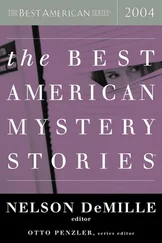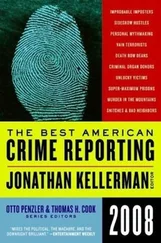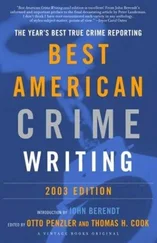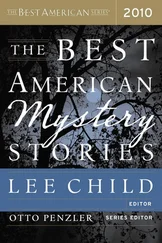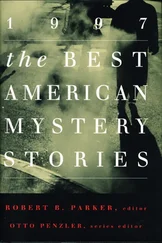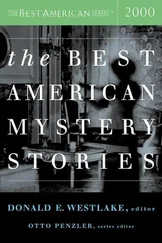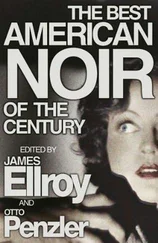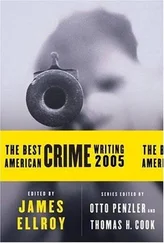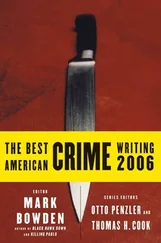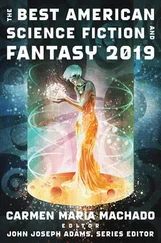It was January 1991 and the Somali civil war, a conflict that continues to this day, had just started. With the ousting of President Mohamed Siad Barre, Somalia’s long-simmering tribal rivalries had erupted into extreme violence-many people were fleeing Somalia, driving south to the safety of Kenya. Shafi’s family was running out of food. So his father decided to make a dash to the store. He barely made it through the front door. A bullet tore into his chest, and he bled to death on a dusty street of the capital, among the first to die in a conflict that, according to Human Rights Watch, has killed hundreds of thousands of people.
Two days later, Shafi, his mother, and his seven siblings fled. As they walked through Mogadishu, some neighbors passed them and offered to give the family a ride out of the city. From there they took a bus to Kenya. Eight years later-most of them spent in refugee camps-Shafi Ahmed and his family made it to America.
Seven years after that, in the early hours of May 29, 2006, Shafi was dead. Like his father, he was gunned down in the street in what appears to have been part of a Somali tribal war. But this time the killer likely came from a new kind of tribe: one of the Somali gangs of Minneapolis and St. Paul.
OFFICER JEANINE BRUDENELL WORKS for the Intelligence Sharing and Analysis Center of the Minneapolis Police Department and has come to know more about Somali gangs in Minnesota than probably anyone else in the Twin Cities law-enforcement community. She strongly believes that the situation needs to be addressed before it escalates.
“It’s going to be like when we decided to ignore the African-American gangs when they came into Minneapolis and we pretended we didn’t have gangs,” she says. “It will grow into a more organized crime syndicate.”
While Somalis currently constitute a small percentage of the Twin Cities’ gangs (African-Americans make up the largest portion, police sources say), Brudenell believes that if the cities’ Somali community-which some Somalis estimate to number as many as 60,000 people-continues to grow and the local authorities don’t start paying attention, the problem could spiral out of control.
“A lot of very young people were involved in the civil war,” says Shukri Adan, a community leader who was commissioned in 2006 by the city of Minneapolis to write a report on Somali youth issues. “They witnessed extreme violence.”
This is confirmed by officials within the justice system. When young Somalis are arrested and enter the juvenile detention center in Minneapolis, they are given a medical examination. “A lot of Somali youth suffer from PTSD [post-traumatic stress disorder],” Chris Owens, the director of Hennepin County’s Juvenile Probation Division, tells me. “They’ve seen a lot of horrible things. [In America] they just jump back to whatever violence they observed in their formative years.”
The Minnesota Gang Strike Force, a combined-law-enforcement group that combats gang activity in the Twin Cities, now has 52 Somali gang members listed on its classified roster-but law-enforcement officials and Somali community leaders say that figure is only scratching the surface. One federal agent who has significant experience investigating immigrant gangs says that he has rarely come across a closer-knit, harder-to-penetrate gang culture. Very few ethnicities are structured so strongly along tribal lines.
Somalis, who made up the largest percentage of refugees admitted to the United States in 2004, 2005, and 2006, have turned Minneapolis into the Mogadishu of the Midwest. In 2006, 25 percent of all refugees to come to the United States were Somalis. What worries Brudenell is that the gang problem isn’t being addressed. Another 4,000 to 6,000 Somali refugees are expected to show up in the United States during 2008.
Government officials and Somali community leaders estimate that the majority of these new arrivals will head for the Twin Cities because of the area’s well-established Somali tribal networks. At first the Somali refugees gravitated toward San Diego, but word spread before long that Minnesota-Minneapolis in particular-was the place to go. Its people were tolerant; the city and state welfare systems were comparatively welcoming; there were lots of good jobs in meat-packing plants and on assembly lines for which you didn’t need more than a few words of English; and more and more in the Twin Cities and throughout the state of Minnesota, there were familiar and friendly faces from back home. Only California is the initial home to more Somali refugees than Minnesota-and not by much; the difference is only two percentage points.
Many of the arriving Somalis are expected to be young: In 2006, nearly 42 percent of Somali refugees coming to the United States were age 17 or under-which makes them more likely to be recruited by gangs. And among them are Somalia’s very own lost boys-who see violence as the norm.
EVEN THE SOMALI KIDS WHO WERE DEEPLY involved in the closed-ranks violence of the Twin Cities Somali gangs (the Murda Gang, the Hot Boyz, the Somali Outlaws) knew Shafi Ahmed was a good kid. He was proud and studious, a little nerdy. He would memorize the Koran while his Somali classmates were finding other, less safe ways to combat the intimidation and violence they encountered as non-English-speaking refugees in an American city.
It was, to the first wave of refugee kids’ surprise, the African-American kids who beat up on them the most. (“Go back to Africa, animals,” some of them would say.) The Mexicans and the Asians got their licks in too. Shafi was occasionally beaten up by African-American kids, just like everybody else, his mother says. But he turned to his studies and his religion for succor.
His prom photo, from 2004, shows a good-looking, clean-cut young man. He has a slim face with high cheekbones. He’s wearing a gray polo shirt with a white T-shirt underneath. Nothing about him could be described as gangsta, but he was encountering rivalries nonetheless-as do many young Somalis.
“I don’t hate blacks,” one former Somali gang member tells me. “But for us Somalians, blacks put us through hell. They didn’t like how we looked-they never accept us as black like them.”
The African-Americans’ hostility did not prevent Somali kids from imitating their tormentors. There’s nothing more embarrassing to a Somali kid than to be called a “Flight 13” by other Somalis. Flight 13 was a legendary early plane load of Somali refugees. To be a Flight 13 is to be fresh off the boat. Not American, not hip-hop.
SOME PARTS OF THE TWIN CITIES seem like they could be a short subway ride from downtown Mogadishu. The Starbucks on Riverside Avenue and Highway 94 in Minneapolis has been turned into a meeting point for Somali men, many of them elders of different tribes; it is rare to see a non-Somali customer. There are mosques, a community center, restaurants, food stores, and the run-down towers of the Cedar-Riverside projects.
Most Somali of all are the malls. To enter the Village Market mall in south Minneapolis is to step into a bustling corner of Mogadishu, with narrow corridors lined with racks of long, colorful skirts and scarves; barbers and travel agents and restaurants where men play dominoes; and windowless stores that sell everything a Somali home might need.
I have arranged to meet a woman named Kali in one of these stores. There isn’t much to see of Kali, just her dark eyes and her hands. The rest is covered by the black and maroon folds of a devout Muslim woman’s garb. The voice-mail message on her cell phone is a long sermon by a Muslim preacher.
Kali is 26. She came to the United States when she was 9. That makes her part of the early wave of Somali refugees-and one of the first generation of Somali gang members.
Читать дальше

